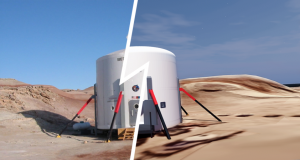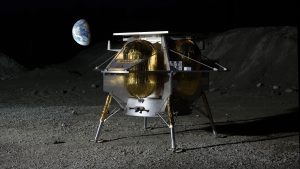The Radiation Threat is a Paper Tiger

So I’ve been hearing a lot of yapping about how we can’t send people to Mars because of the radiation threat. Anyone who goes to the Red Planet will spend months well outside the protection of any kind of the Van Allen belts that basically provide a protective sheath that blocks the worst of the sun’s radiation. There’s even talk of finding a shorter route to Mars if we have to send a manned mission at all using (of all things) a nuclear-powered engine! Imagine strapping a nuclear engine to your motorcycle just for the sake of speed, and I hope you don’t mind the idea of your sensitive parts being thoroughly baked, and you’ll see what I think of that idea. And even that probably won’t cut the time by all that much when you consider that there are only so many proposed routes to Mars that don’t take our theoretical spacecraft too close to the sun for comfort or swing us way out beyond any timetable that gets the crew to Mars without them doing flip-flops out of pure boredom. Speeding up too much could cause a crew to miss Mars altogether.
Space.com’s Take On the Issue
The radiation could exceed current NASA limits on radiation exposure. But only if we let it.
Seriously? There are ways to manage the risk with some good planning. A fairly simple radiation shield would involve a few cubic meters between the crew and the source of radiation. A layer of water with a depth of one meter should suffice to bring the radiation dosage down to no worse than an equivalent amount of time spent outside on an especially sunny summer. Don’t forget the sunscreen. However, anyone who has ever lugged a large water jug around knows that water is notoriously heavy. Just five gallons of the stuff can weigh forty pounds. According to some estimates of what we’ll need, the radiation shielding will require 630 cubic meters of H20 just for a capsule the size of what was used by the MARS 500 experiments. That much water masses 630,000 kilograms – kind of unreasonable when you consider that you have to boost the whole thing from the Earth’s surface into transit to Mars. But more doable if you’re on a Martian surface and can set up a structure that can hold the weight of all that water. (And, for all you water jug haulers, the water only weighs 1/3 as much on Mars.)
If you don’t mind being protected by something that your body produces anyway, one proposal uses dried human feces as a radiation shield. Part of the problem here is that you have to produce it before you can use it, but it could work. They’d basically be like bricks once you’ve reclaimed the water and purified it for drinking. This is part of the Inspiration Mars plan: The astronaut couple would start out using their food and water as radiation shielding, and I hope they don’t mind eating slightly irradiated food. That would gradually be replaced by human waste. (The idea of using a married couple is was pretty neat, by the way. Imagine that being your ultimate honeymoon. Plenty of stargazing.)
The Curiosity Rover Measures Radiation on Mars
…And also dates a Younger rock.
Once we’re on Mars, handling the radiation will be a little easier. Sure, the magnetic field is spotty and the atmosphere is so thin that it can’t block as much radiation as Earth’s. However, the Mars One plan includes piling dirt on top of the habitat until the increased risk of cancer won’t be much. Anyway, we’re going to be indoors most of the time and the sun is not as intense as on Earth, so fewer worries about sunburn. Actually, I’m halfway hoping that we’ll land near a cliff. Once you overlook the obvious potential for accidents, it would be awesome if some of us were trained at rock-climbing so we can go look for caves. It would be so much fun if we could make those caves airtight using designs that we can create with our 3D printers and then transforming them into underground wonders. Imagine the looks on the ground crew’s faces when we start disappearing for hours and then days and weeks at a time while building our new home that will give us no more radiation worries than maybe encountering a radioactive rock.
So, is the radiation thing a paper tiger? The thing about paper tigers is that they at least get people to look at them. And maybe a very brave person might poke it with a stick before deciding that, “Hey, this is just painted newspaper.” It becomes a matter of showing people ways to deal with the tiger so that it becomes harmless.
Some Books To Read
Geiger Counters from Ebay
In case you’ve ever been interested in what kind of radiation levels you’re getting right here on Earth.










